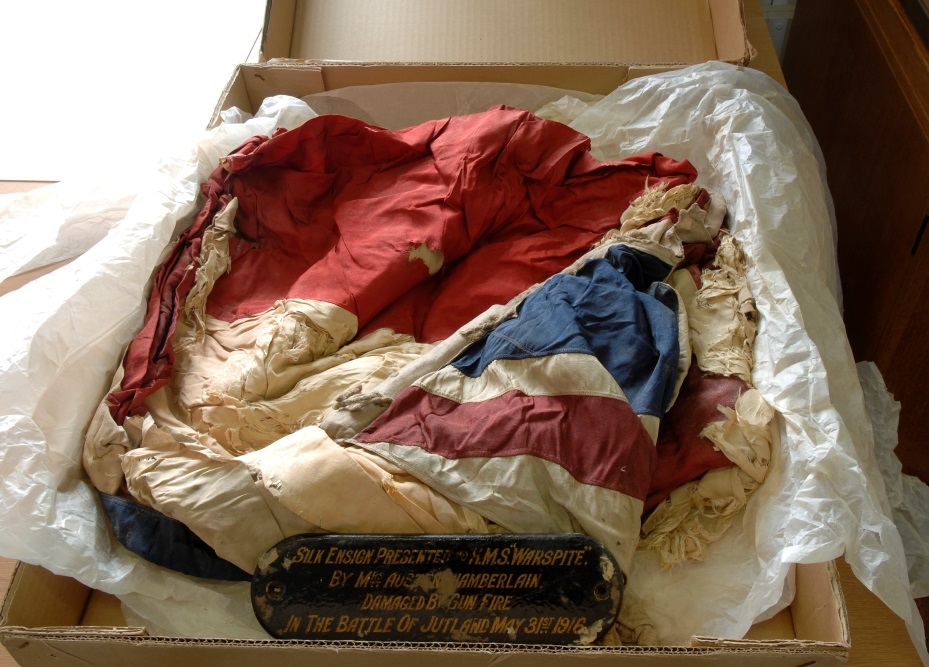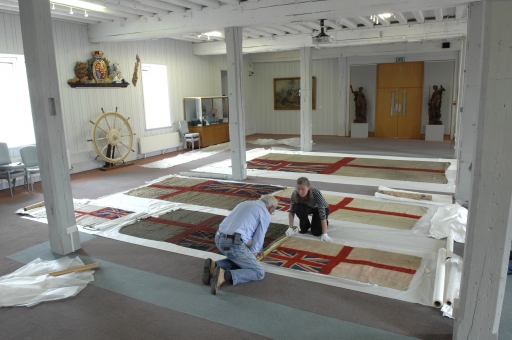Ensigns flown by British warships at the Battle of Jutland are being prepared for display as part of a major centenary exhibition at the National Museum of the Royal Navy in 2016.
The flags, some battle damaged or blackened with funnel smoke, have been laid out together for examination by curators at the museum in Portsmouth’s historic dockyard.
Senior Heritage Projects Officer at the NMRN, Victoria Ingles, said: “Taken out of the museum store for the first time in years and last flown at the Battle of Jutland, it has been really exciting to have the opportunity to examine these naval ensigns in detail.
“Now we need to work out how we can safely display such large and delicate items in our exhibition next year.”
The biggest of the flags, from the dreadnought battleship, HMS Bellerophon, measures around 2.6m by 5.3m.
Others in the NMRN collection originally belonged to the Royal Navy warships Marksman, Warrior, Warspite, Obedient, and Indomitable.
 Silk ensign from HMS Warspite, which was damaged by gun fire at Jutland. The ‘super dreadnought’ went on to serve in the Second World War. (Photo: National Museum of the Royal Navy)
Silk ensign from HMS Warspite, which was damaged by gun fire at Jutland. The ‘super dreadnought’ went on to serve in the Second World War. (Photo: National Museum of the Royal Navy)
The museum hopes to feature all of the ensigns at its exhibition opening on May 12th 2016 to mark the centenary of the Battle of Jutland.
It explains: “Usually a ship will fly one ensign but traditionally on going into battle, ships would fly multiple ensigns.
“There are some accounts of vessels with five ensigns and this was primarily to be easily identifiable as British warships in the confusion and smoke of battle.”
Jutland is considered to be greatest naval battle of all time, says the National Museum of the Royal Navy.
The North Sea clash between the British and German fleets took place on May 31st/June 1st 1916.
It was the biggest sea battle of the First World War, involving 250 warships and costing almost 10,000 lives from both sides.
Britain suffered heavier losses of ships and manpower but the German surface fleet didn’t mount another major challenge for the rest of the war.
Information & images supplied by the National Museum of the Royal Navy (NMRN), Portsmouth
Posted by: Peter Alhadeff, Centenary News
